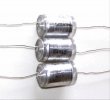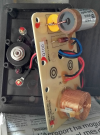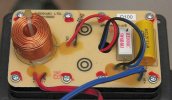I'm not a great expert on the subject.
But there is a small difference between a 30 cent condenser and a 10 euro one (insulation quality, tolerance, etc. ) perhaps this also affects the sound......?
Many times we stick to the power/signal cable (this is more debatable) but the crossover being the main sound processing center of the speaker itself, if made with poor or first-order material, a difference in performance is more than plausible.
Then everyone can think as he wants, I won't discuss this, but in electronics capacitors, resistors, coils and anything else, if made and built with a poor or excellent level, can make a difference.
See you soon.




